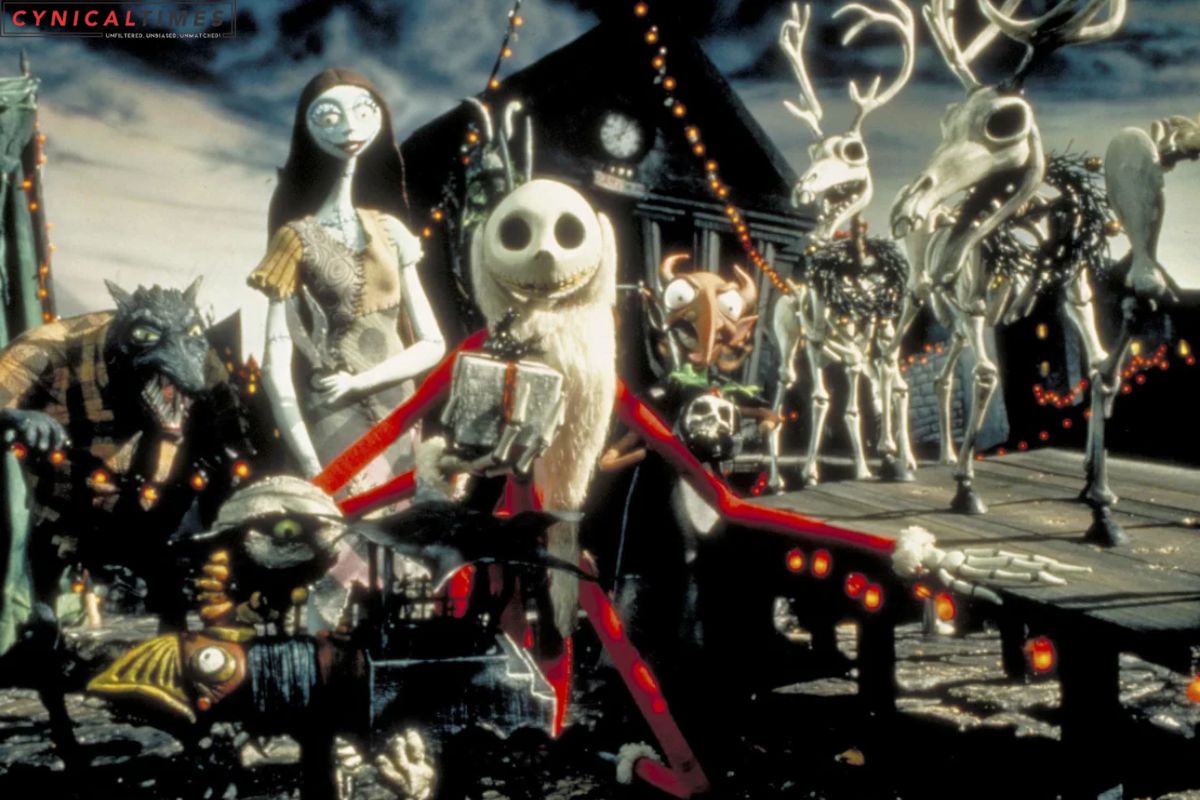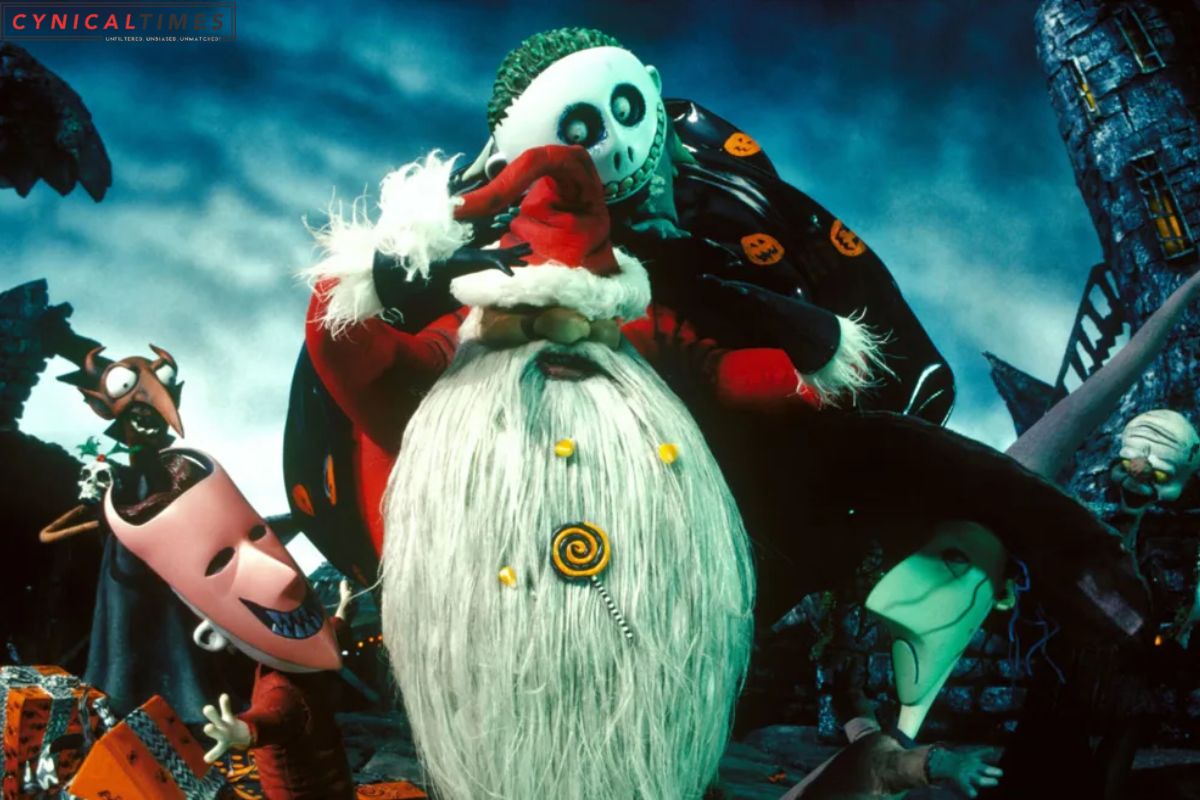Disney Timeless Triumph: In today’s Disney universe, “The Nightmare Before Christmas” stands as a proud hallmark. Jack Skellington, the film’s spindly protagonist, graces Disneyland during both Halloween and Christmastime. His skeletal grin adorns an array of merchandise, from pillowcases to backpacks to Build-a-Bear plush toys. This cinematic masterpiece remains one of Disney’s most exceptional creations, proving its financial mettle even after three decades.
However, back in 1993, marketing a Halloween-Christmas fusion featuring a somewhat eccentric but well-intentioned skeleton donning a bat bowtie, nearly jeopardizing Santa’s existence, was no straightforward task. Disney was apprehensive that this film might terrify young audiences accustomed to the likes of “The Little Mermaid” and “Aladdin.” Consequently, they released the movie under their Touchstone Pictures banner, a label typically reserved for films exploring more mature themes, a decision reminiscent of “Who Framed Roger Rabbit” a few years earlier.
Upon its initial release, “The Nightmare Before Christmas” didn’t make an earth-shattering impact at the box office. It garnered modest attention. Nonetheless, over the years, it found a devoted following, primarily through home video viewings. Viewers came to appreciate its impressive puppetry, offbeat cadence, and its collection of unforgettable seasonal tunes. The support from its audience led to multiple re-releases, propelling the film from cult classic status to a seasonal essential, adored during both Halloween and Christmas.
Fast forward thirty years, and Disney has warmly embraced “The Nightmare Before Christmas.” The film’s characters have become integral to the Haunted Mansion attraction at Disneyland in California. Disney has re-released the movie on numerous occasions. Jack Skellington and his band of undead dreamers are no longer confined to niche stores like Hot Topic and novelty shops. Today, “Nightmare” characters share shelf space with beloved Disney icons like Ariel and Mickey Mouse in the form of stuffed animals and figurines.


As a testament to its enduring appeal, Disney is celebrating the 30th anniversary of this delightful oddity with a theatrical re-release. This seemingly niche creation has evolved into an indispensable offering within Disney’s holiday entertainment portfolio.
“The Nightmare Before Christmas” wasn’t an immediate sensation. The visionaries behind it, Henry Selick and Tim Burton, both of whom honed their craft as animators at Disney during the 1980s, had a penchant for unconventional characters rather than Disney’s traditional protagonists. Their unique sensibilities led them away from Mickey and towards quirkier creations. Selick remarked that they weren’t “typical Disney people.” Burton’s initial concept for “Nightmare” was a poem, populated by macabre characters trying their hand at Christmas. However, Disney didn’t initially bite. It was only after Burton’s triumphant “Batman” film that Disney revisited the project. With Burton occupied with a “Batman” sequel, Selick assumed the role of directing the meticulous stop-motion film, a production spanning over three years.
The enhanced storyline followed Jack Skellington, the Pumpkin King and cherished resident of Halloween Town, as he yearned to do more than just scare trick-or-treaters. His discovery of Christmas Town, the festive epicenter of Santa’s operation, led him to offer Santa a year off – a decision that inadvertently placed Christmas in grave danger as the sinister Oogie Boogie took hold of “Sandy Claws.” Meanwhile, the living rag-doll Sally, secretly in love with Jack, became instrumental in saving Christmas and Jack’s undead existence.
Disney’s executives, while entrusting Selick to bring Burton’s dark yet warm-hearted vision to life, didn’t foresee the film becoming a massive hit. They harbored concerns that the film’s lineup of murderous child sidekicks, warty witches, and a “clown with a tearaway face” might be too unsettling for younger audiences. Selick revealed in a 2006 interview with IGN that Disney never regarded “The Nightmare Before Christmas” as a typical Disney production. Their biggest fear was alienating their core audience and dissuading them from embracing the film.


Consequently, “The Nightmare Before Christmas” received a wide release on October 29, 1993, without prominently featuring Disney’s name. It earned $50 million at the US box office that year, a commendable achievement, even though it pales in comparison to the top-grossing film of the year, the equally dark and crowd-pleasing “Jurassic Park,” which raked in over $357 million domestically. Nevertheless, the film secured an Oscar nomination for Best Visual Effects, even though it ultimately lost to “Jurassic Park.”
The film’s journey from this initial moderate success to its current status as a beloved classic was propelled by the enthusiasm of home viewers who discovered it on VHS and later on DVD. It resonated with individuals of all ages, particularly young viewers who, like Jack, felt misunderstood and destined for something greater than their circumstances suggested.
Renowned film critic Roger Ebert captured this sentiment in his glowing three-and-a-half star review of the film in 1993. He noted that older kids would embrace the film’s offbeat, subversive energy, anticipating wonderful things.
Over the years, Disney’s embrace of “The Nightmare Before Christmas” has only grown. In October 2001, Disneyland introduced “Haunted Mansion Holiday,” an overlay of the classic Haunted Mansion attraction infused with “Nightmare” elements. Jack and the inhabitants of Halloween Town became fixtures in stores like Hot Topic, a haven for customers with alternative tastes. “Nightmare” merchandise was no longer a seasonal phenomenon; it was available year-round. In 2006, Disney re-released the film under the Walt Disney Pictures banner, this time in 3D, and it grossed over $8.7 million in the US.


Also Read : Actor Tyler Christopher, Known for Iconic Soap Roles, Passes Away at 50
Disney’s recognition of the film’s enduring appeal is evident as “Nightmare” characters are now regular fixtures at Disney parks during Halloween and Christmas. They greet young visitors and appear on seasonal merchandise. Furthermore, Disney’s subsequent films have tackled themes related to death more directly. The popular Pixar film “Coco” featured several skeletons, and the studio even released a fully animated version of “Frankenweenie,” based on Burton’s earlier short film of the same name. Burton himself has gone on to direct more children’s films for Disney, including “Alice in Wonderland” and “Dumbo,” preserving his dark sensibilities while catering to a broader audience.
The cult success of “The Nightmare Before Christmas” paved the way for other macabre animated children’s films, including Burton’s “Corpse Bride,” “Paranorman,” and the Henry Selick-directed “Coraline.” This demonstrates that children’s entertainment can explore darker themes while remaining age-appropriate.
In its latest re-release, the film has earned over $7 million and continues to be a prominent title on Disney+, where it is showcased among family-friendly Halloween

